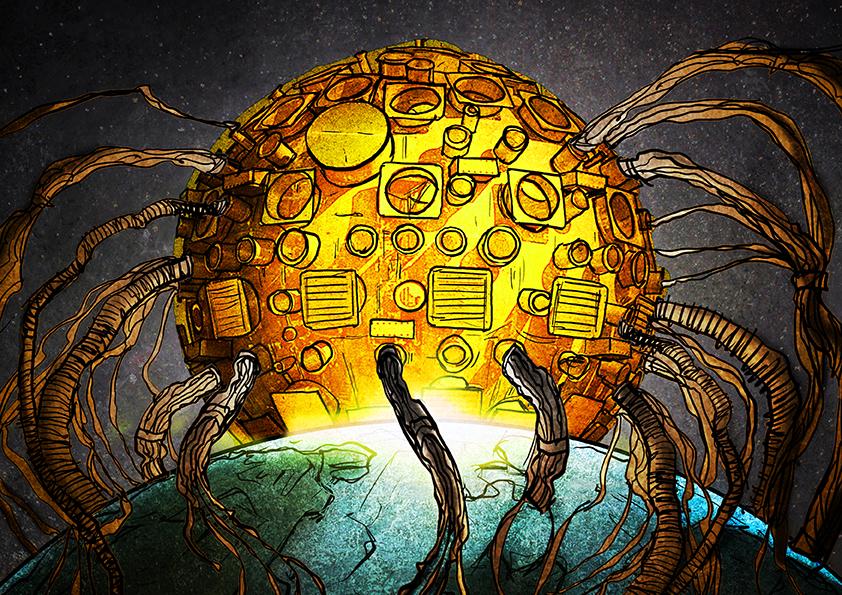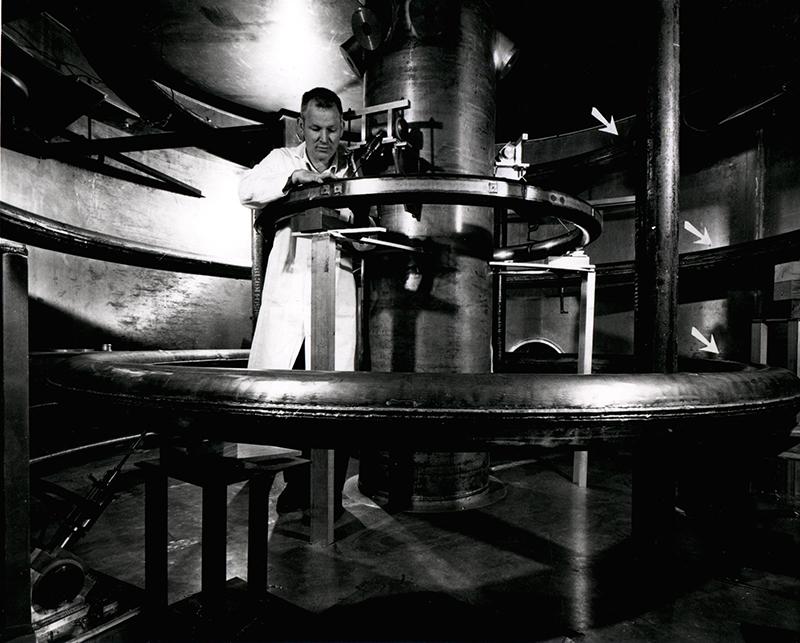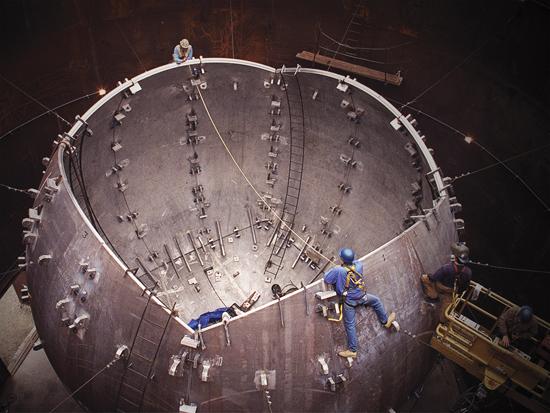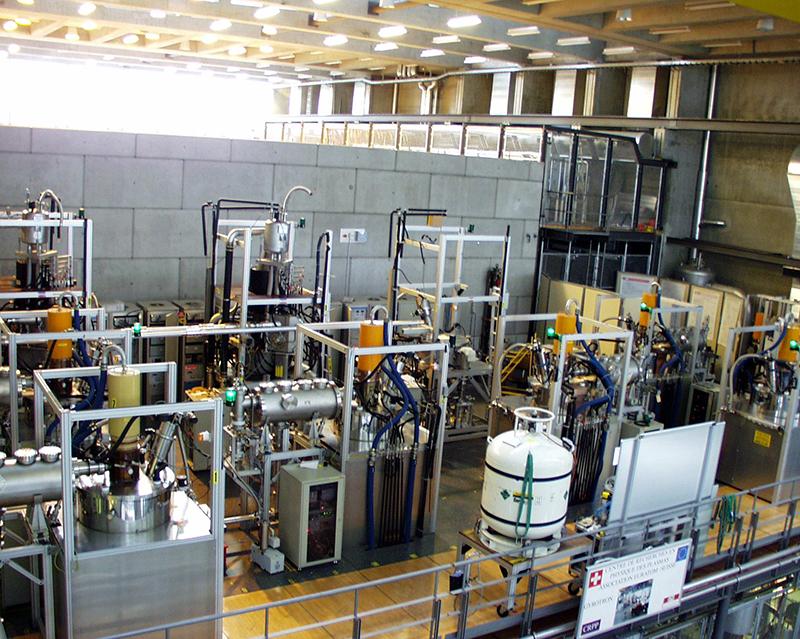Fusion power is the Holy Grail of free energy for the world. But, is it possible to overcome the technical challenges? Does the world have the patience for this long term R&D project!

Since the 1950s,
producing electricity from nuclear fusion has been the dream of many scientists and non-scientists alike. By replicating, in a controlled fashion, the process that powers the sun, it is possible to obtain incredible amounts of energy in a potentially safe and environmentally clean way. This could solve many of the past and present problems related to energy security and global warming. However, for decades now, fusion power has been continuously described as a technology that will be available in 20 to 40 years and still remains just a dream. The main obstacle relates to creating conditions that allow fusion to occur so that the energy invested is less than the energy extracted from the reaction.
A nuclear fusion reaction is characterized by two small nuclei combining to create a heavier nucleus. Energy is released because the mass of the resulting nucleons (protons and neutrons) is less than the combined masses of the smaller, initial nuclei. This “mass defect” yields an amount of energy based on Einstein’s equation E=mc2 and is a result of the differences in the binding energy of the initial and final nuclei. This “nuclear binding energy” is the energy required to split a nucleus into its constituent elements, and it is the amount by which a nucleus is lighter than the total individual protons and neutrons that constitute it.

It is convenient to divide the binding energy of a nucleus by the total number of protons and neutrons in it. This yields values of binding energies per nucleon, and they can be plotted as shown in fig. 1. In order for a reaction to release energy, the initial nucleons must have less binding energy than the final nucleons. In this way, the products of the reaction are collectively less massive than the reactants. Note that iron-56 has the highest binding energy per nucleon and that therefore, fission will yield energy for elements heavier than iron-56. On the other hand, for elements lighter than iron-56, the fusion process produces energy.
Reaction Rate Fusion
Nevertheless, these types of nuclear reactions occur only under certain conditions. In order to start fusion, it is necessary to overcome the repulsive electric force between nuclei that results from the positive charge of protons. Atoms must be very energetic and under great amounts of pressure in order for the interaction to begin. Of course, the degree of heat and pressure necessary to spark this process depends on the elements that are being used for fusion. A mix of deuterium and tritium (D-T) atoms, isotopes of hydrogen with one and two neutrons respectively, has a lower energy barrier (which must be overcome to start fusion) because of the atoms' low ratio of protons to neutrons.
In order to achieve the necessary conditions to spark fusion and produce energy, two main approaches are being currently researched: Inertial Confinement Fusion (ICF) and Magnetic Confinement Fusion (MCF).

In the first case, ICF, small pellets weighing around 10 milligrams and containing a mixture of deuterium and tritium ice are used for the fusion reaction. These pellets are placed into a hohlraum, a small gold object which contains a cavity. When laser light is directed towards this object, it is converted into thermal x-rays which increase the pressure on the outside of the small pellets of D-T fuel – the so-called spherical “pusher” which is often made of glass or beryllium. After a short time, the pressure and temperature is enough for the fuel to react and release thermal energy.
Another ICF mechanism is called direct drive. In this process the same pellets are directly irradiated by laser light, instead of being placed in a cavity. This is more efficient in terms of energy transfer from the laser to the target/fuel. Usually a single high-energy laser light is used in conjunction with mirrors so that the fuel target, which is placed inside a chamber, receives homogeneous light across its surface. As the outer layer, the pusher, explodes, it compresses the fuel and causes shock waves which travel inward towards the center of the pellet, compressing and heating it until fusion occurs. In both ICF mechanisms the objective is to produce a condition in which the heating process causes a chain reaction that leads to the burning of most of the fuel. Recently, particular attention has been given to the approach of “fast ignition”, in which the fuel is heated normally and when it reaches maximum density, a secondary highly energetic petawatt laser provides a short pulse on one side of the pellet. If this technique will become successful, it will allow us to spark the fusion process utilizing lower amounts of energy compared to the original mechanism.
"One of the advantages of fusion is that there is a very low probability of an accident occurring..."
One of the difficulties of the ICF approach is that for this mechanism to work properly, it is necessary to obtain a very smooth and precise fuel capsule in which the D-T mix does not interact excessively with the pusher. The fuel component must be close to a perfect sphere, so that the shock waves can ignite the atoms properly at the center of the capsule. Also, it is necessary to calibrate the laser beams so that the energy is delivered homogenous throughout the surface of the target. Whereas the fuel manufacture has improved greatly in the past years, further research must be done for laser technologies.
The second fusion approach, MCF, utilizes large magnetic fields to confine the electrically charged ions and electrons that compose the hot plasma in which fusion occurs. This type of confinement works best in toroidal (doughnut-shaped) configurations and, like ICF, with deuterium-tritium fuel. The promising Tokamak, Stellator and Reversed Field Pinch (RFP) devices use this type of arrangement.
In particular, Tokamak technology is being heavily researched and seems to have great potential. This type of device is being investigated thanks to JET (Joint European Torus), the largest existing Tokamak in the world. A new one, ITER, is currently under construction in Cadarache, France.

Like all Tokamaks, ITER will use a combination of two magnetic fields in order to confine and stabilize the plasma. The strong toroidal field of about 11.8 Tesla will be provided by eighteen toroidal field coils which will surround the doughnut shaped chamber and will operate with superconducting wires kept cool with liquid helium. The weaker poloidal field will be produced by the current in the plasma itself and by six magnets placed outside of the toroidal field coils. These two magnetic fields will prevent the plasma from touching the chamber’s walls, thereby maintaining the plasma’s stability by preventing it from cooling down and being "poisoned" by the materials from the toroidal chamber walls. This stability will enhance fusion in the ultra-hot plasma, and electricity will be obtained by converting the kinetic energy of neutrons produced in the reaction.
Overall, ITER aims to produce 500 MW of power from a 50 MW investment. If this were to occur, it would clearly be a great success for the international scientific community involved in these efforts – it would be the first demonstration of a fusion reactor which produces net power. This achievement would also pave the way to a commercialization of this technology in the near future. ITER is scheduled to be completed by 2019, which entails that fusion could be used as a method to produce electricity for the public by 2050.
This would be a great milestone, considering that we live in a world in which both the human population and the energy demand are rising at unimaginable rates. Fusion is one of the solutions to this ever pressing need to produce safe and clean electricity.
One of the advantages of fusion is that there is a very low probability of an accident occurring, unlike with fission. The fusion reaction occurs only in very specific conditions of temperature and pressure, so any damage in the equipment or reactor would disrupt this delicate balance causing the reaction to stop.
"Considering the future of electricity production, it seems that fusion may be necessary for the next generations."
Fusion is also safer than fission with respect to its byproducts. A fusion reactor does not produce hydrocarbons/carbon dioxide; it produces helium, a harmless gas, and releases some amounts of tritium. Even though it has a short half-life of about 12 years, tritium poses a small radioactive threat only if it is inhaled or absorbed. Nonetheless, research is underway to improve the containment structure and to use a deuterium-deuterium (D-D) fusion reaction rather than a deuterium-tritium (D-T) mechanism. Radioactivity is also limited, compared to fission, due to the design of the power plant. After shut-down, a fusion reactor is radioactive because of the collisions between the structural material and the high-energy neutrons. Depending on the elements used to construct the reactor, the radioactivity may be initially higher than the radioactivity produced by nuclear fission waste. However, for all fusion plants the radioactive byproducts are short-lived, which means than within a century, the radioactivity would significantly diminish to levels comparable to those of coal and ash.
Fusion is also a sustainable energy source. The fuels used are technically not “renewable”, but there are incredibly large reserves. As previously stated, current fusion reactors mainly utilize deuterium, a naturally occurring isotope of hydrogen, and tritium, which is mainly produced by utilizing lithium. Assuming that fusion output remains constantly equal to the 1995 world electricity consumption, the terrestrial reserves of lithium would last for 3000 years, lithium from sea water could be utilized for 60 million years and deuterium, which can also be used in a D-D reaction system, could provide electricity for 150 billion years – which is more than 10 times the current age of the Universe.
Considering the future of electricity production, it seems that fusion may be necessary for the next generations. Even though this will require large investments, the ultimate reward is too large to ignore. The related science is certainly not simple and many challenges still lie ahead, but achieving electricity from fusion now seems more feasible than ever.
Further Reading:
- The ITER website, including an interactive webpage that explains each part of the Tokamak
- Miscellaneous videos which explain the ITER reactor and the current situation
- Leo Hickman describes the research that is being done for nuclear fusion and interviews two leading scientists
- An interesting analysis of the future of fusion power
Bibliography:
EFDA JET. " JET – A European joint venture." EFDA European Fusion Development Agreement. European Fusion Development Agreement, 2012. Web. 05 Aug 2012.
Garwin, Richard L., and Georges Charpak. Megawatts and Megatons - The Future of Nuclear Power and Nuclear Weapons. Chicago: The university of Chicago Press, 2002. 3-383. Print.
Hickman, Leo. "Fusion power: is it getting any closer?." theguardian. Guardian News and Media, 2011. Web. 05 Aug 2012.
ITER. "Blanket." ITER - the way to new energy. ITER, 2012. Web. 05 Aug 2012.
ITER. "Facts and Figures." ITER - the way to new energy. ITER, 2012. Web. 05 Aug 2012.
ITER. "Fuelling the Fusion Reaction." ITER - the way to new energy. ITER, 2012. Web. 05 Aug 2012.
ITER. "Home." Iter - the way to new energy. ITER, 2012. Web. 05 Aug 2012.
ITER. "Magnets." ITER - the way to new energy. ITER, 2012. Web. 05 Aug 2012.
Ongena, J., and G. Van Oost. Energy For Future Centuries Will Fusion Be An Inexhaustible, Safe And Clean Energy Source?. Fusion Science and Technology. Volume 45, 2004.
World Nuclear Association. "Nuclear Fusion Power." World Nuclear Association. http://www.world-nuclear.org/info/inf66.html, 2012. Web. 06 Aug 2012.
